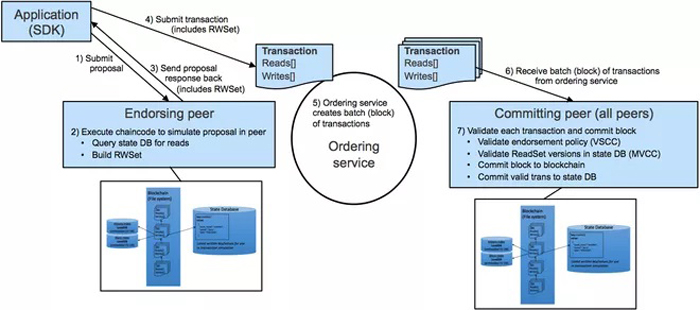Even though the technology of blockchain was first invented for constructing open and public trustless networks, it is presently developing towards private and permissioned platforms for enterprises. The last few years introduced new blockchains for executing business-ready solutions supporting entities to construct new structures of cooperation. One of the most famous enterprise-grade blockchain frameworks is Hyperledger Fabric. Let us know more about this. Here is a Hyperledger Fabric tutorial.
This solution is highly modular and is designed by IBM for industrial enterprise purposes. Let us find out why this is such a strong player among various blockchain technologies.
What Is Hyperledger Fabric?
Hyperledger Fabric in blockchain is a modular blockchain structure that operates as a foundation for developing products, applications, and solutions that are based on the blockchain using plug-and-play elements that are focused on use within private companies.
Hyperledger was started by Digital Asset and IBM and has now developed as a collaborative cross-industry project, which is at present time being hosted by the Linux Foundation. Among the various Hyperledger projects, Fabric was the initial one to exit the “incubation” stage and attain the “active” stage in March 2017.
How Hyperledger Fabric Works?
Traditional blockchain networks cannot support confidential contracts and private transactions that are of utmost significance for businesses. The fabric was created in response to this as a scalable, modular, and secure foundation for providing industrial blockchain solutions.
Hyperledger is the open-source engine for blockchain and handles the most crucial features for evaluating and using blockchain for business use scenarios.
Within the private industrial mechanism, the verifiable identity of a player is a primary need. The fabric helps memberships based on permission; all network players must have known similarities. Many business sectors, like finance and healthcare, are bound by data protection regulations that command maintaining data about the several participants and their respective availability to various data points. Fabric supports similar permission-based membership.
Modular Architecture
The modular architecture of Fabric splits the transaction processing workflow into three varied stages: smart contracts known as chaincode that consists of the distributed logic processing and agreement of the mechanism, transaction ordering, and transaction validation, and also commitment. This segregation provides several benefits:
- A decreased number of verification and trust levels that keeps the processing and network clutter-free
- Enhanced network scalability
- Better complete performance
Along with that, the support of Fabric for plug-and-play of several elements enables convenient reuse of prevailing features and ready-made integration of several modules. For example, if an operation already prevails that authenticates the identity of the participant, an enterprise-level network simply requires to plug and reuse this prevailing structure instead of constructing the same operation from scratch.
The players on the network have three varied roles:
- Endorser
- Committer
- Consenter
In a brief, the transaction proposal is submitted to the endorser peer as per the predefined endorsement policy related to the number of endorsers needed. After enough endorsements by the endorsers, a block or batch of transactions is delivered to the committers. Committers authenticate that the endorsement policy was followed and that there are no complex transactions. Once both the checks are created, the transactions are dedicated to the ledger.

Since only ensuring instructions, like signatures and read or write sets, are sent across the network, the performance and scalability of the network are improved. Only committers and endorsers have access to the transaction, and security is enhanced with a fewer number of players having access to key data points.
Instances Of Hyperledger Fabric
Suppose there is a manufacturer that wishes to ship chocolates to a prominent retailer or market of retailers at a prominent value but does not wish to reveal that value in other markets.
Since the shift of the product may include other parties, such as customs, a financing bank, and a shipping company the private value may be revealed to all included parties if a basic version of blockchain technology is utilized to support this transaction.
Fabric tackles this problem by keeping private transactions private on the network; only players who are required to know are aware of the important details. Data partitioning on the blockchain enables specific data points to be available only to the parties who are required to know.
Advantages Of Hyperledger Fabric
Let us now have a look at all the benefits of Hyperledger Fabric.
Open Source
The Fabric platform is an open source blockchain module hosted by The Linux Foundation. It has a growing and active community of developers.
Permissioned
Fabric networks are permissioned blockchains, implying all the identities of the members taking part are authenticated and known. This advantage is specifically useful in sectors that include supply chain, healthcare, banking, and insurance where data cannot be vulnerable to unknown companies. For instance, an insurance entity on a Fabric blockchain network can share claim data of the customer with permissioned parties to keep up with customer privacy.
Governance And Access Control
Fabric networks comprise channels, which are a private “subnet” of communication among two or more prominent network members, members on the network can transact in a confidential and private way. Every transaction on the blockchain network is implemented on a channel, where every party must be verified and authorized to transact on that channel. This offers an added layer of access control and is primarily useful when members wish to restrict exposure of the information, for instance when competitors are on a similar network. The fabric also provides a Private Data Collection feature set, where permission to provide transactions on a channel can be restricted to a subset of players.
Criticism Of Hyperledger Fabric
The high-water mark of cryptocurrency enthusiasm broke in 2018 after the collapse of the value of Bitcoin. Overoptimistic assertions about the value of the latest technology were substituted with skepticism, and associated technologies, that include Hyperledger, also went through from this skepticism. Hyperledger fights with other Hyperledger ventures such as Indy, Iroha, and Sawtooth. It also fights with R3’s Corda, which is also a permission-based, private DLT. This can be termed as a drawback of this technology.
Conclusion
Hyperledger Fabric is a permissioned, open source blockchain framework, begun in 2015 by The Linux Foundation. The operation of this software is quite interesting. The above article goes on to illustrate the operation, instance, and other dimensions of this software.
- AI Blockchain Projects: 8 Effective Ventures To Know Now - 03/08/2024
- Hyperledger Fabric: Why Has It Become So Famous? - 03/08/2024
- Ethereum Name Service: An Easy Step-By-Step Guide For You - 03/08/2024
 Crypto Venture News One stop Crypto Track Down
Crypto Venture News One stop Crypto Track Down 






